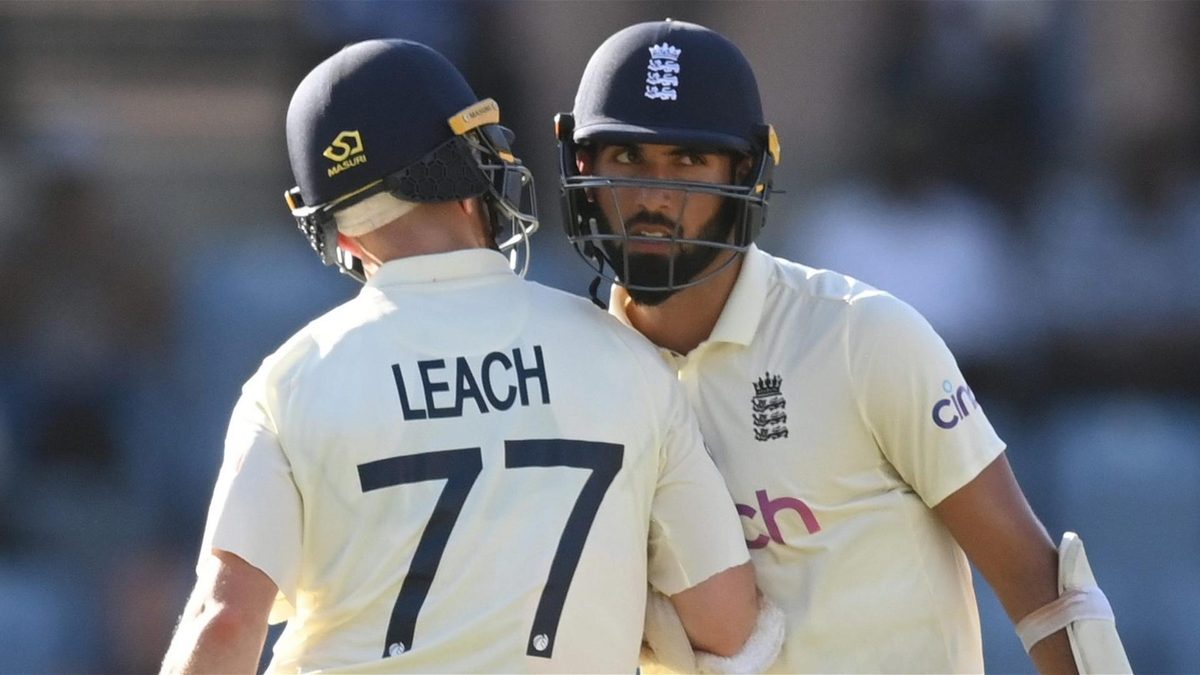
When England found themselves 114-9 two balls after tea on the first day of the third Test against West Indies, their fans were settling in for what has become a familiar hobby: indulging in some gallows humour.
Not even the most optimistic of supporters would have given England a hope of a substantial total. And yet somehow, by stumps, West Indies were yet to bat, with Jack Leach and Saqib Mahmood, Nos.10 and 11, having put on 90 runs between them, Mahmood dismissed for 49 in the day’s final over.
Rarely have England had such a substantial last-wicket stand, with this effort sitting ninth in the all-time list, and within two runs of becoming England’s third-largest this century. Top of the tree is the 198 put on by James Anderson and Joe Root at Trent Bridge against India in 2014, with Anderson hitting 81.
Many lower-order stands are based upon a flashing blade and risks taken freely, but Mahmood and Leach opted for a defiant, methodical approach. Their stand occupied 218 balls, the sixth most for the last wicket in Test history, and the second most for England, behind that Anderson-Root stand. This was the longest stand between Nos.10 and 11 in a Test innings, where balls faced are available.
While some large last-wicket partnerships have put the finishing touches on a strong innings, it’s rare for two tailenders to bat so well after the rest of the line-up has struggled. This was only the second time in history that the two top scores in an innings have come from Nos.10 and 11, with the other occasion coming all the way back in 1885.
While Leach has some form with the bat, having hit the most famous 1* in England’s history and a 92 against Ireland as nightwatchman in the same summer in 2019, for Mahmood this was an innings from nowhere. His 49 was his highest professional score, with the knock also containing his maiden first-class six. He was the top scorer in the innings, making him just the 12th No.11 in Test history to do so.
[breakout id=”0″][/breakout]
While most agreed the pitch eased as the day went on, Mahmood and Leach’s success still threw the struggles of the top order into sharp relief. Even 114-9 represented a partial recovery from 67-7, with four of England’s top five scores coming from their Nos.8-11. This was the seventh time since the start of 2021 that England had been seven wickets down with fewer than 100 runs on the board.
Alex Lees avoided blame to an extent, making 31, his highest Test score so far, off 97 balls, but England’s Nos.2-7 had an exceptionally poor showing, with none reaching double figures. They added a cumulative 24 runs, the fifth lowest England’s Nos.2-7 have managed in a Test innings, where all have batted. This was also only the fifth time that none of England’s Nos.2-7 have reached double figures, and the first time since 1950.
WinViz now rates West Indies as having a 49 per cent chance to claim the series, giving England a 39 per cent shot. Tomorrow, Leach and Mahmood will have a big role to play in their main discipline to try and wrest the game back towards England. But were it not for their efforts with the bat, West Indies might already be out of reach.








